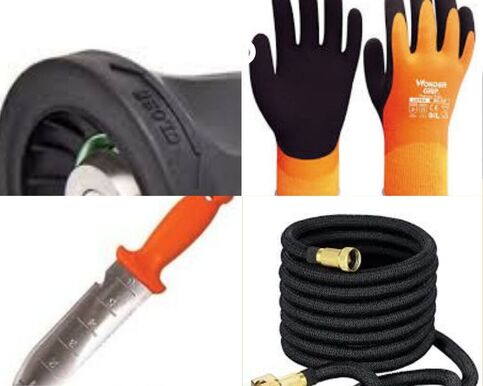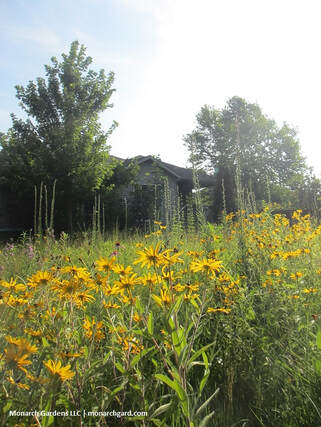Fireman's Hose Nozzle
Tired of sprinkler nozzle handles breaking off? Or ones with odd water pressure? Try a fireman's nozzle, especially this one which I've had for years with no problem at all. Takes a licking and keeps on watering.
Expandable Hose
Gardens hose are a necessary evil, which is one reason I try to design drought tolerant gardens. The coil, kink, are heavy, and take up lots of space. Not an expandable hose. While it might rip if dragged too much over sharp stones or metal, and shouldn't be left out over winter, I'm smitten. It shrinks to half its size when drained and is as light as a feather -- and seldom if ever kinks. Bam.
Soil Knife
I don't need to try any other soil knife, or any other hand tool. This one saws through roots, cuts twine, treats clay soil like butter, and opens bags and boxes and more. #1 tool in the garden.
Gloves
I've spent decades trying to find the perfect garden glove -- one I can use while planting, watering, cutting, or hauling stone. There is no perfect glove, but this one gets close. You'll find others that will probably work just as well from different brands, but what I like about this design is a complete coating on the back of the hand (think abrasion and water resistance). There's a cooler summer work glove option, as well as an insulated autumn / winter option.
These are garden design books that changed my perspective and helped me grow (I'd suggest my book but it's not a design book -- however, the next one will be, in 2022).
Planting in a Post-Wild World -- Thomas Rainer and Claudia West
The Know Maintenance Perennial Garden -- Roy Diblik
Field Guide to Wildflowers of Nebraska and the Great Plains -- Jon Farrar (ok, not a design book per se)
Attracting Beneficial Bugs to Your Garden -- Jessica Walliser
Pollinators of Native Plants -- Heather Holm




 RSS Feed
RSS Feed

